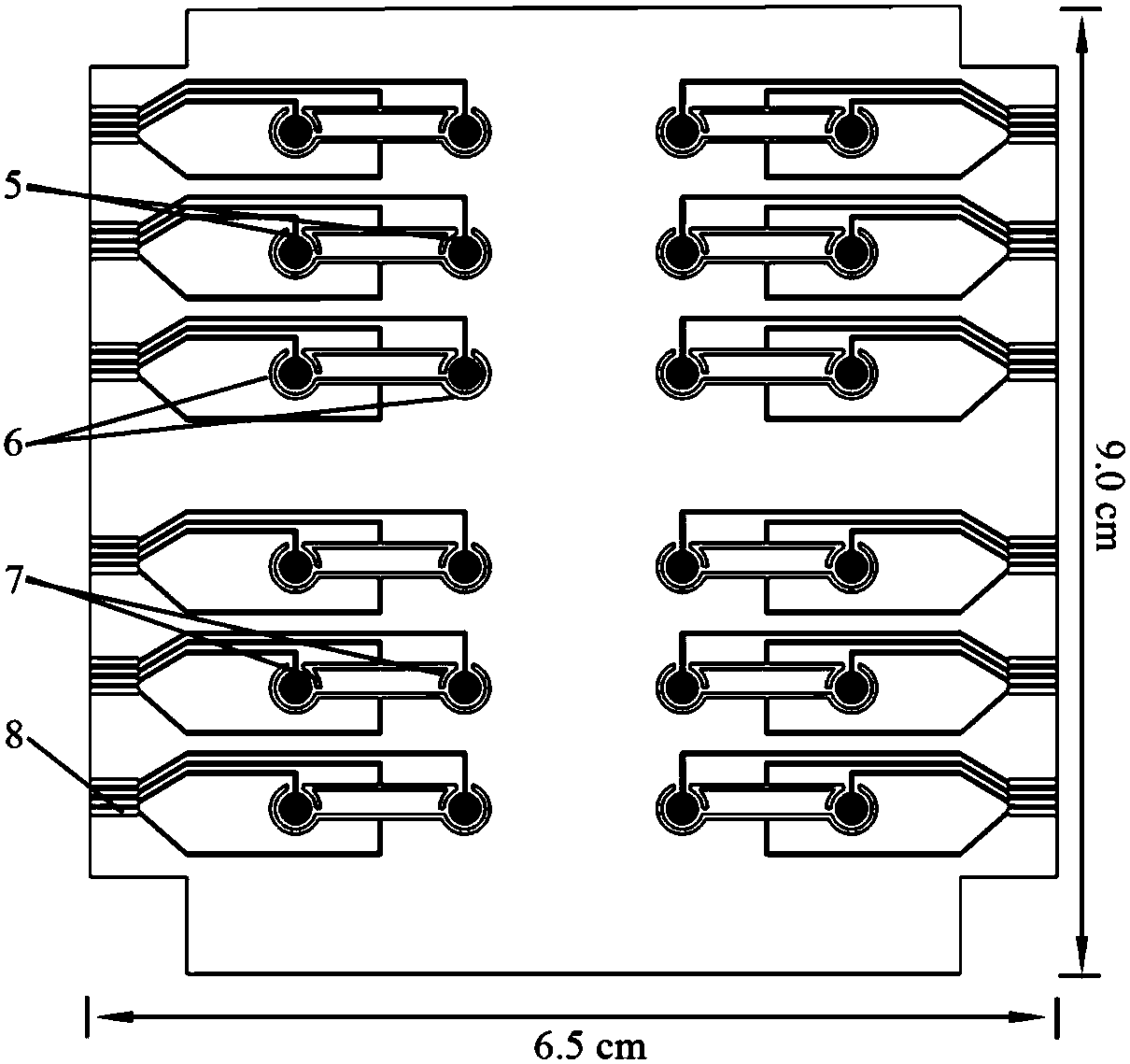24-site micro-array screen printing electrochemical sensing device and application thereof
A technology of screen printing and sensing device, applied in electrochemical variables of materials, measuring devices, scientific instruments, etc., can solve the problems of pollution, cross-channel, low sensor sensitivity, etc., achieve accurate quantitative detection, and overcome long detection time. Effect
- Summary
- Abstract
- Description
- Claims
- Application Information
AI Technical Summary
Problems solved by technology
Method used
Image
Examples
Embodiment 1
[0032] (1) Design and fabrication of 24-site microarray screen-printed electrochemical sensing device
[0033] Such as figure 1 As shown, a 24-site microarray screen-printed electrochemical sensing device is composed of four parts: a sliding layer 1, an insulating layer 2, a base layer 3 and a support layer 4, and the base layer and the sliding layer form a double-layer sliding structure. The conductive printed circuit is collected at the printed circuit interface 8 at the end of the base layer and is used to connect the electrochemical workstation after being combined with the connector. The supporting layer 4 is used to fix the whole device and control the sliding range. The insulating layer 2 is used to define the reaction area.
[0034]Its base layer 3 is printed with 24 working electrodes and integrated circuits, and circular hollow structures 12 and rectangular hollow structures 11 are arranged crosswise on the sliding layer. By sliding up and down, the sliding layer a...
Embodiment 2
[0048] Determination of Enrofloxacin and Melamine Content in Actual Samples:
[0049] Using the 24-site microarray screen printing electrochemical sensing device of the present invention and the working electrode modified by graphene materials, the Enroza in actual samples (whole milk, skimmed milk powder, infant milk powder) was treated by immunosuppressive method The star and melamine were analyzed and determined, and the standard addition method was used to carry out the standard addition recovery experiment. The differential pulse method in the CHI electrochemical workstation system was selected for detection, and the scanning range of the differential pulse method was -0.3-0.5v. Measure in parallel three times, read the current response value and calculate the average value, bring it into the standard curve formula, and calculate the corresponding concentration. The recoveries obtained are 90.18%-100.76% and 91.34%-108.81%, respectively, indicating that the use of the 24...
PUM
| Property | Measurement | Unit |
|---|---|---|
| diameter | aaaaa | aaaaa |
Abstract
Description
Claims
Application Information
 Login to View More
Login to View More - R&D
- Intellectual Property
- Life Sciences
- Materials
- Tech Scout
- Unparalleled Data Quality
- Higher Quality Content
- 60% Fewer Hallucinations
Browse by: Latest US Patents, China's latest patents, Technical Efficacy Thesaurus, Application Domain, Technology Topic, Popular Technical Reports.
© 2025 PatSnap. All rights reserved.Legal|Privacy policy|Modern Slavery Act Transparency Statement|Sitemap|About US| Contact US: help@patsnap.com



